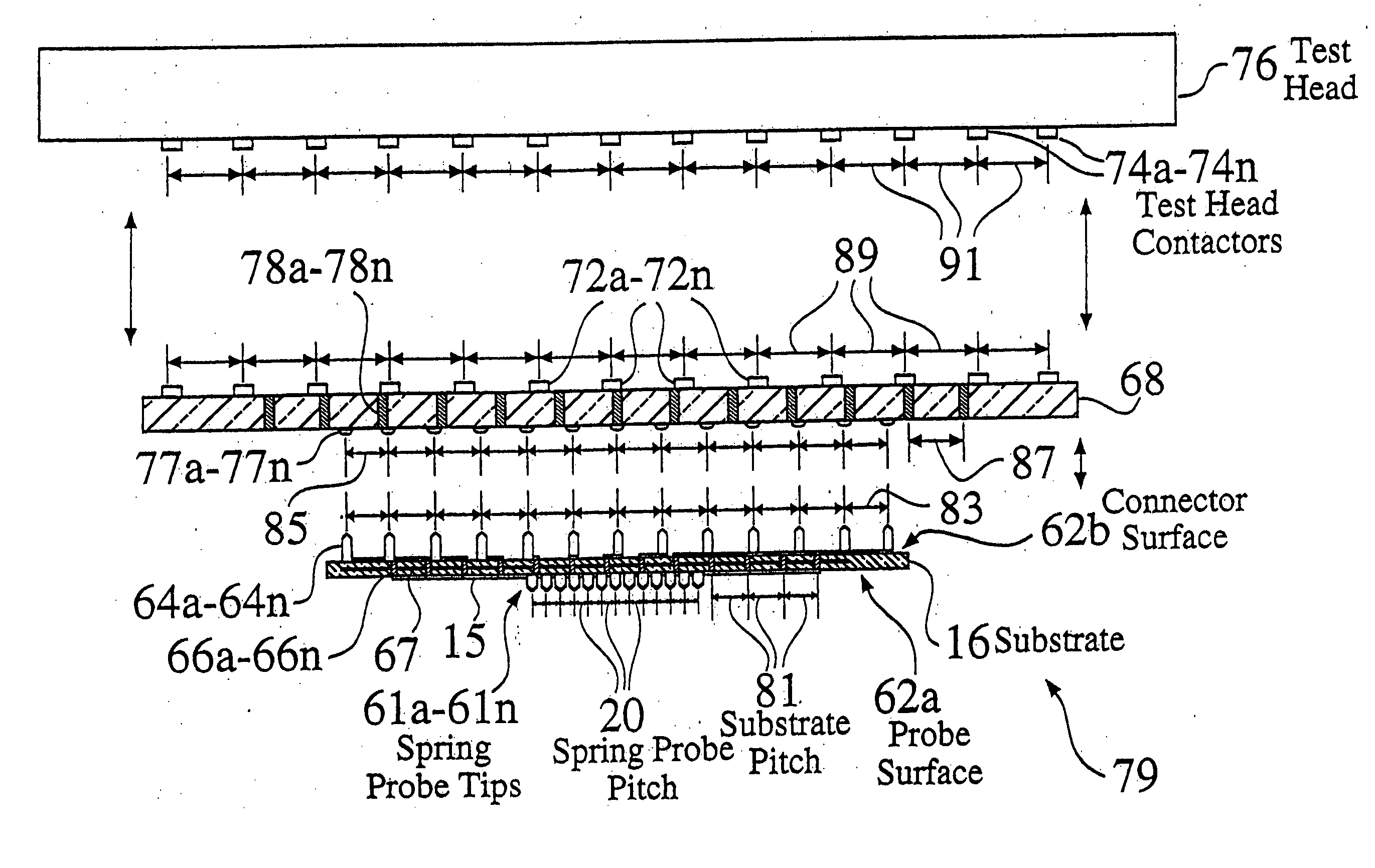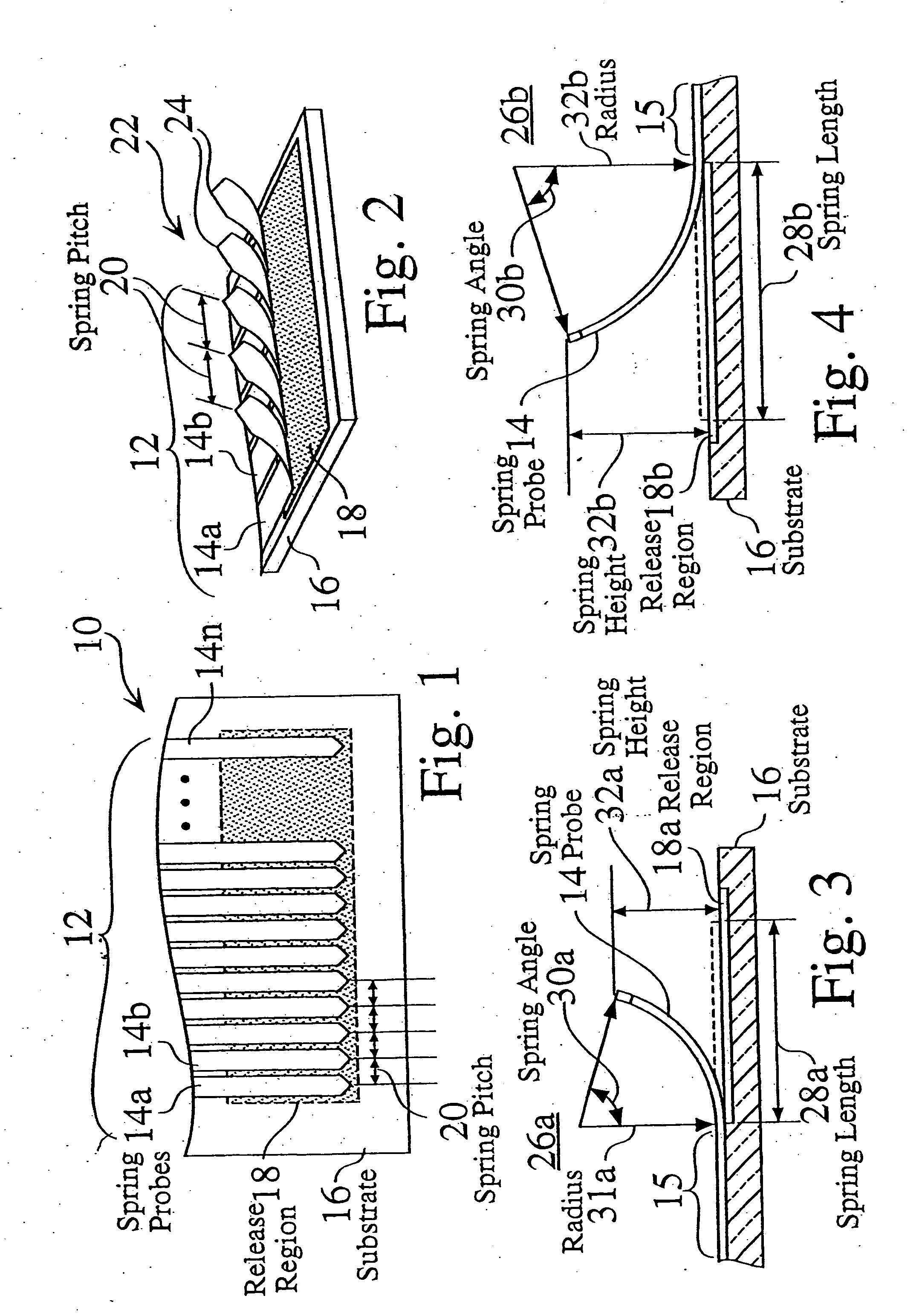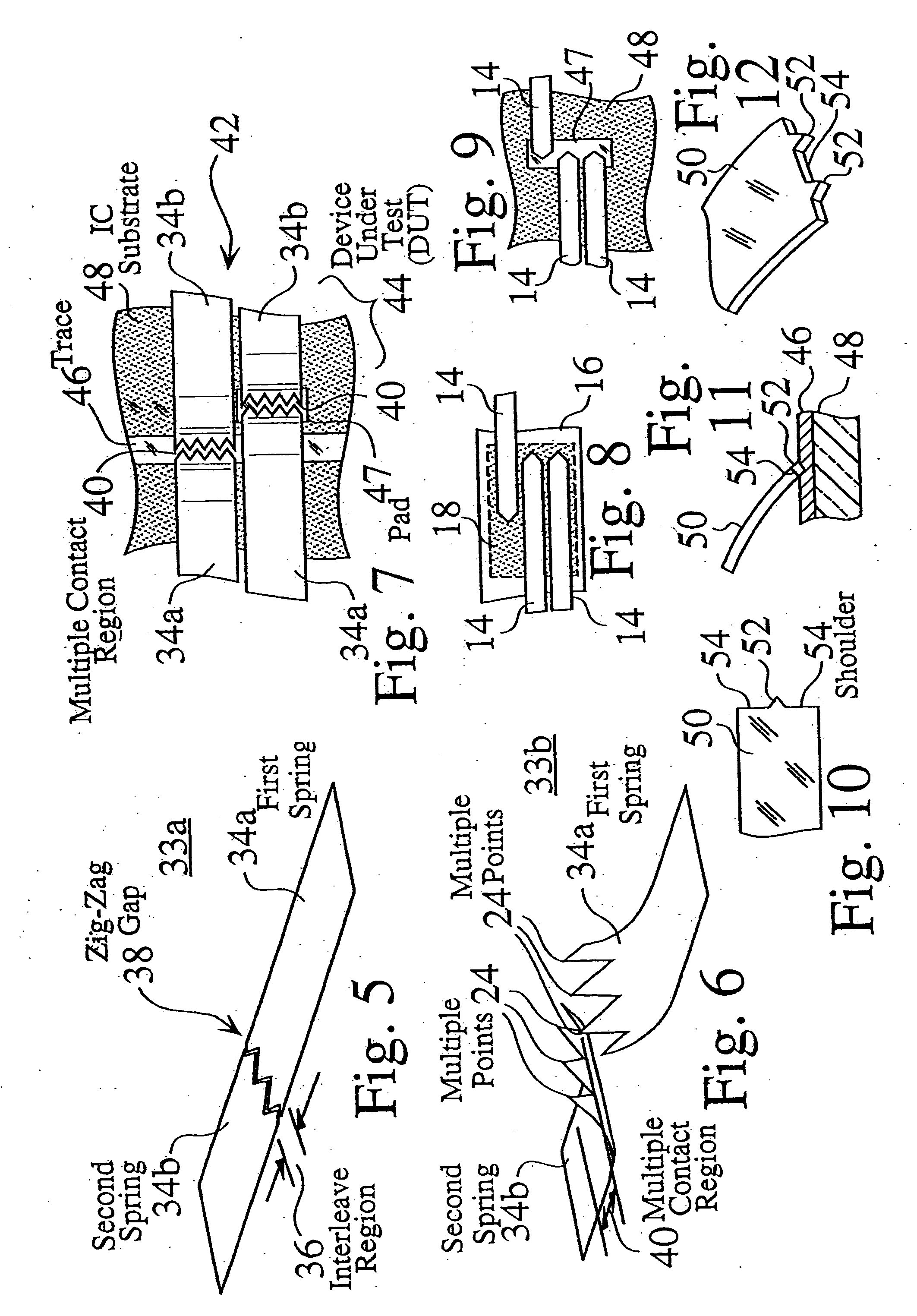Construction structures and manufacturing processes for integrated circuit wafer probe card assemblies
a technology of integrated circuit wafer and assembly structure, which is applied in the direction of printed element electric connection formation, coupling device connection, instruments, etc., can solve the problems of limited pitch, small pad pitch, high clock frequency, and inability to use tungsten needle probes, so as to reduce assembly manufacturing cost and manufacturing time, and extend mechanical compliance. , the effect of high speed testing
- Summary
- Abstract
- Description
- Claims
- Application Information
AI Technical Summary
Benefits of technology
Problems solved by technology
Method used
Image
Examples
Embodiment Construction
[0071]FIG. 1 is a plan view 10 of a linear array 12 of photolithographically patterned springs 14a-14n, prior to release from a substrate 16. The conductive springs 14a-14n are typically formed on the substrate layer 16, by two or more successive layers 17, (e.g. such as 17a,17b in FIG. 47) of deposited metal, such as through low and high energy plasma deposition processes, followed by photolithographic patterning, as is widely known in the semiconductor industry. The successive layers 17a,17b have different inherent levels of stress. The release regions 18 of the substrate 16 are then processed by undercut etching, whereby portions of the spring contacts 14a-14n located over the release region 18, are released from the substrate 16 and extend (i.e. bend) away from the substrate 16, as a result of the inherent stresses between the deposited metallic layers 17a,17b. Fixed regions 15 (FIG. 3, FIG. 4) of the deposited metal traces remain affixed to the substrate 16, and are typically u...
PUM
 Login to View More
Login to View More Abstract
Description
Claims
Application Information
 Login to View More
Login to View More - R&D
- Intellectual Property
- Life Sciences
- Materials
- Tech Scout
- Unparalleled Data Quality
- Higher Quality Content
- 60% Fewer Hallucinations
Browse by: Latest US Patents, China's latest patents, Technical Efficacy Thesaurus, Application Domain, Technology Topic, Popular Technical Reports.
© 2025 PatSnap. All rights reserved.Legal|Privacy policy|Modern Slavery Act Transparency Statement|Sitemap|About US| Contact US: help@patsnap.com



